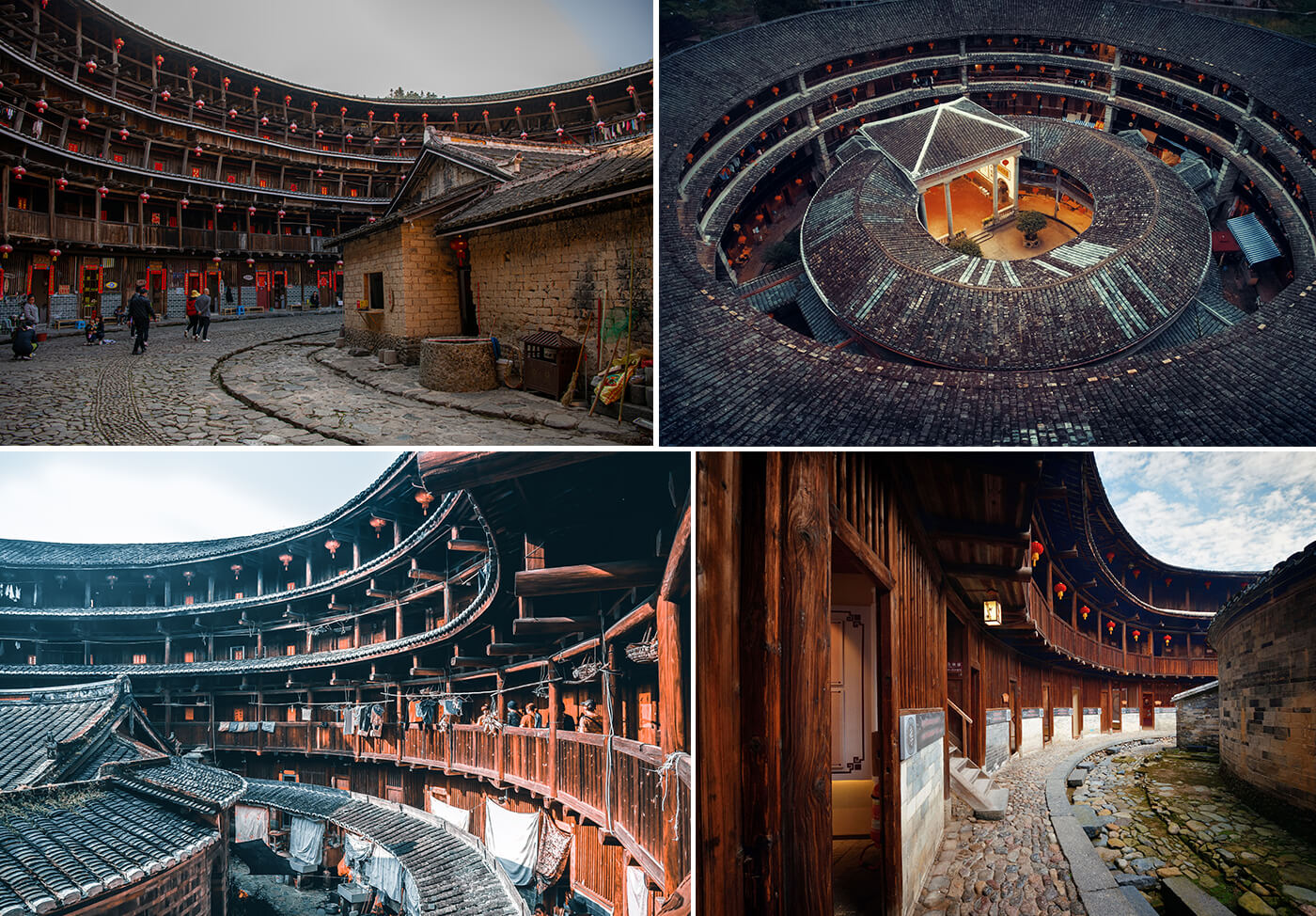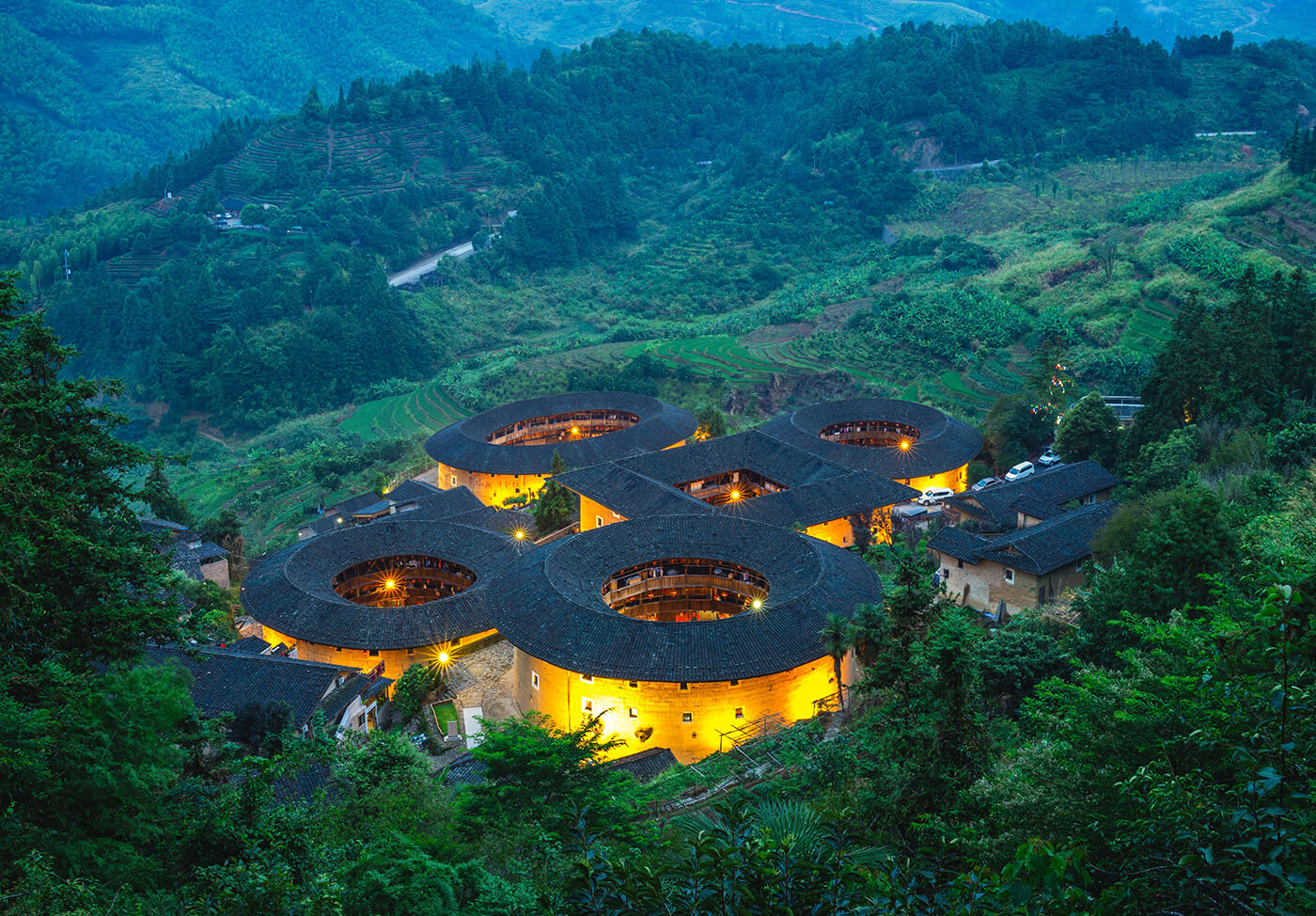
Tulou-Fujian,China
Tulou is a distinctive type of residential architecture built by the Hakka people, an ethnic group of Chinese origin. Mainly located in Fujian Province in southeastern China, these extraordinary buildings date back a millennium and are known for their unique structure, defensive functionality, and cultural value. These structures can vary in size and shape, but the most common configurations are circular and rectangular.
The circular ones, built to form a communal fortress, are the most well-known and can house several hundred people. All complexes are built primarily with local materials such as rammed earth, bamboo, wood, and stone. The outer walls are very robust and can exceed 1.8 meters in thickness. This type of construction provides excellent thermal insulation and solid defense against external attacks. Although less iconic, even the rectangular or square Tulou maintains the same functionalities.

The interior of a Tulou is organized over several levels, generally three or four floors. The ground floor is usually dedicated to kitchens and storage rooms, while the upper floors are used as living spaces. At the center of the building, a common open space is often used for social activities and ceremonies. The living quarters are arranged along the perimeter, with internal corridors connecting all the rooms. One of the most remarkable features of the Tulou is their defensive function.
During political instability and conflict, these structures served as impregnable fortresses. The massive walls and reinforced and guarded single main entrance made it difficult for potential attackers to gain access. The windows on the upper floors were small and placed high up to prevent access from the outside and allow for defense from above in case of an attack.

Tulou are not just residential structures; they also represent the heart of Hakka community life. The internal layout promotes social cohesion and cooperation among the families living there. Each unit is inhabited by an extended family clan, often descendants of a single ancestor. This strengthens family ties and fosters a sense of belonging and common identity.
Today, although China prohibits building new ones for residential purposes, some communities still live in the Tulou. In 2008, about 46 Tulou in Fujian Province were inscribed on the UNESCO World Heritage List. This designation has brought greater international attention to these extraordinary buildings, promoting tourism and contributing to the preservation of this unique architectural and cultural heritage.

"The photos on this site are owned by users or purchased from image banks"
#Village
#Neighborhood
You may also like
You may also like
 Locanda Aescher,Switzerland
Locanda Aescher,Switzerland
 Museum of the Future,Dubai
Museum of the Future,Dubai